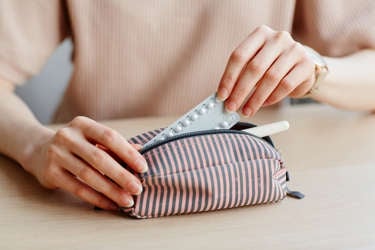If you are on a home therapy program, you can order product through your hemophilia treatment centre. When it is ready, you can pick up product at your comprehensive care team (CCT) or another local hospital with a blood bank (if pre-arranged). They usually give you about one month’s supply at a time, which should be enough to meet your treatment needs.
Ordering factor
Here are some tips to keep in mind when ordering factor:
- Call or email your nurse coordinator/data manager at least one week in advance. Make sure you have enough product to cover a severe bleed up to and including the day you are picking up new factor. Avoid leaving yourself in a situation where you have absolutely no product left.
- Decide where you would like to pick up the product, and discuss with your nurse to see if this is an option.
- When considering the number of vials you may need, think about any activities that you have planned which may demand more product, such as sport days or travelling. You may also want to order more product if you’ve had many bleeds recently.
- Specify the vial size. Products come in a variety of vial sizes, which help you prepare a calculated dose.
- Specify the brand of product you need.
- Order supplies, such as syringes and sharps containers. Did you know you can get small sharps containers for travelling?
You can make special requests over the phone as well, such as if you need a travel letter or would like the order rushed.
When contacting a blood bank
If you are contacting a blood bank rather than your comprehensive care team, here are a few things to keep in mind:
- Call and make sure your product has arrived. If not, you can ask for a small amount to tide you over until your full shipment arrives (they will not leave you stranded).
- Get the name of the person who helped you in case a different person is working when you arrive. You can reference them in case of confusion.
- Double-check that they are giving you the same number of vials that you ordered.
- Ask about pick-up times. Keep in mind holidays, especially around the December holiday break. If you need more product, that means everyone else will probably need orders too!
Picking up factor
When picking up factor, remember to bring your:
- Photo I.D.
- Health card
- Hospital card
- Discreet bag - like a canvas bag.
As soon as you pick up a new order, separate 3 or 4 days worth of factor in a different spot in your fridge. This way when you run out of the main supply, you’ll know to order more and have enough backup in a different spot to keep you covered.
Did you know that some companies will actually accept a malfunctioning vial of factor and replace it at no additional cost to the health-care system? If you happen to get a vial that is broken, bring it to your treatment centre. Your comprehensive care team (CCT) will send it back to the company.
Storing factor
You can store factor in your fridge. Here are some tips to keep in mind:
- Place your case of product in a clean spot away from liquids and foods that can spoil.
- To save space, separate everything immediately and discard all excess packaging. Vials need to remain in the fridge. You can dispose the packaging, including the package containing the needles.
- Check the temperature of the fridge to make sure your product will not freeze; your fridge should not be colder than two degrees celsius.
Record-keeping
After you have finished infusing, log the details of your treatment in your record book. Here are a few points to consider:
- Decide whether you will keep a hard-copy journal or an electronic copy.
- Decide how often you will make entries. Do you save vials and do it at the end of a week? To help keep track, you can save and date the stickers from each vial.
- Are you involved in any hemophilia research studies? Being part of a research study may mean you need to write down more details.
How to dispose of supplies
Different supplies are disposed of in different ways depending on what they are made of, and what they have been used for. Find a breakdown of where to dispose of what below:
Sharps container
- All used needles, including protective needle sheathes.
- Syringes that contain blood can also go in this container.
- Devices used to transfer factor.
- Broken product vials
- Anything sharp, or that has come into contact with your blood.
Recycling bin
- Plastic components of a syringe that have not come in contact with blood.
- All plastic from packaging i.e. plastic protective needle cover.
- Paper instruction pamphlets and boxes.
Green Bin
- Nothing goes in the Green Bin, because none of the material you use is organic waste.
Garbage
- Any opened or used gauze pads, alcohol swabs and band aids.
Keep
- Leftover supplies such as needles, adhesive bandages, and gauze that have not been opened or used can be kept. You can use these at a later time, or stock up your friends' first aid kits.
Double check with your local waste management centres to see if they have any exceptions to these general guidelines.







